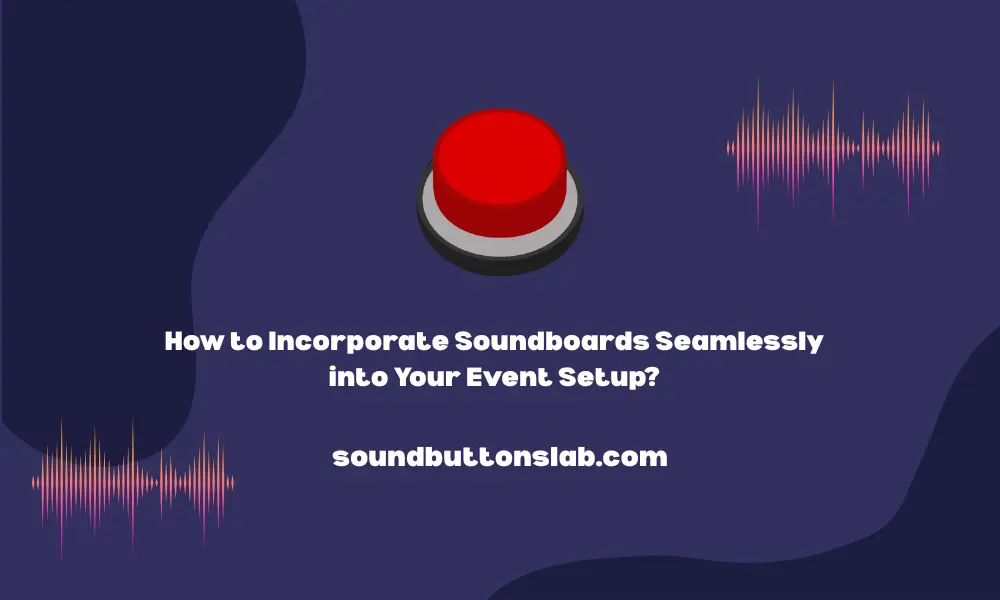A soundboard is essential for delivering clear, professional-quality audio at events. Whether it's a corporate presentation, wedding, or live performance, a properly integrated soundboard ensures smooth sound distribution and prevents technical disruptions.
Poor audio can diminish engagement, making it vital to set up, configure, and manage the system effectively. Strategic planning, real-time monitoring, and troubleshooting help create an immersive experience for both speakers and attendees.
What to Consider Before Adding a Soundboard to Your Event
The first step is determining the venue size, number of speakers, and type of event. Large spaces require a powerful system, while smaller venues need precise volume control to avoid echo or distortion. A central placement provides sound engineers with the best monitoring position, ensuring adjustments reflect real-time audience experiences.
Wireless connectivity, power sources, and input channels should be evaluated early to prevent technical failures. Additionally, testing microphone sensitivity and speaker placement minimizes sound imbalances and feedback issues. A well-thought-out setup ensures consistency and reliability throughout the event.
How to Connect and Configure a Soundboard Efficiently for Optimal Audio Performance
A well-connected and properly configured soundboard ensures clear, uninterrupted audio throughout an event. From securing stable connections to adjusting settings based on the event type, every step plays a role in delivering professional sound quality. Proper setup minimizes technical issues and enhances the overall audience experience.
Establishing Reliable Connections
Once the soundboard is in position, the next step is ensuring all connections are stable. Balanced cables help reduce interference while testing every input prevents unexpected disruptions. Each microphone, speaker, and playback device should be assigned to its designated channel, ensuring smooth transitions between speakers or performers.
Matching Configuration to Event Type
The right sound settings depend on the event's nature. A business conference requires even sound distribution to maintain speech clarity, while a concert benefits from enhanced bass, reverb, and sound effects. Digital soundboards simplify this process by allowing pre-saved configurations, eliminating the need for repeated manual adjustments.
How to Enhance Soundboard Performance with Advanced Features
Modern soundboards come with features that optimize performance. Built-in compressors maintain volume balance, preventing sudden spikes or drop-offs. Reverb and delay effects enhance live music, while Bluetooth and Wi-Fi connectivity allow remote adjustments, giving operators the flexibility to manage sound from different points in the venue.
Feedback suppression and noise gates help eliminate background noise and microphone screeching, ensuring crisp audio. Assigning custom presets to different audio sources further improves efficiency, reducing the need for real-time manual tweaks during the event.
How to Manage Soundboard Controls During the Event for Seamless Audio Delivery
A well-configured soundboard still requires active monitoring to maintain consistent sound quality throughout the event. Factors like audience movement, speaker dynamics, and environmental changes can affect audio balance, making real-time adjustments essential. This is how you can manage Soundboard Controls During the Event:
Real-Time Adjustments for Optimal Sound
Even after setup, continuous monitoring is necessary to adapt to shifting conditions. A wireless controller or tablet allows sound engineers to move around and make real-time tweaks based on audience feedback. Changes in crowd size or speaker positioning can impact acoustics, requiring quick modifications to maintain clarity.
Maintaining Audio Balance and Clarity
Keeping an eye on VU meters prevents volume inconsistencies, avoiding distortion or sudden drops in sound levels. Muting unused microphones reduces background noise while adjusting speaker placements minimizes echo or unintended feedback. Attention to these small yet vital details ensures a polished, professional audio experience.
How to Troubleshoot Common Soundboard Issues for a Smooth Event Experience
Even with meticulous planning, technical issues can occur during an event. Sound disruptions such as feedback loops, signal loss, or volume imbalances can affect the audience's experience. Quick and efficient troubleshooting ensures that the event runs without interruptions, maintaining professional sound quality:
Identifying and Resolving Common Problems
Frequent soundboard issues include cable disconnections, improper gain settings, and channel mismatches. Checking all connections and adjusting gain levels can often resolve unexpected problems. If a channel fails, switching to a backup input prevents delays.
Ensuring a Reliable Backup Plan
Having a redundant audio source, such as a secondary laptop or microphone, provides a safety net in case of primary equipment failure. Wireless interference can cause disruptions, so keeping wired alternatives available ensures stability. Addressing issues swiftly prevents extended downtime and keeps the event on track.
Why Training Staff or Volunteers for Soundboard Operation is Essential
If the event lacks a dedicated sound engineer, staff or volunteers should be trained in basic operations. They must know how to adjust volume levels, mute and unmute microphones, and quickly resolve common issues. A simple guide or checklist helps them handle situations efficiently, reducing the risk of audio disruptions.
A brief practice session before the event provides hands-on experience, allowing staff to familiarize themselves with the controls. Even minimal preparation ensures a smoother, more professional execution.
Conclusion
A properly integrated soundboard eliminates distractions and keeps the audience engaged. Whether at a conference, wedding, or live performance, seamless sound integration creates a polished and immersive experience. High-quality audio ensures that speeches are heard, music sounds crisp, and transitions feel natural. With the right setup, adjustments, and monitoring, a soundboard becomes a powerful tool that enhances any event.
